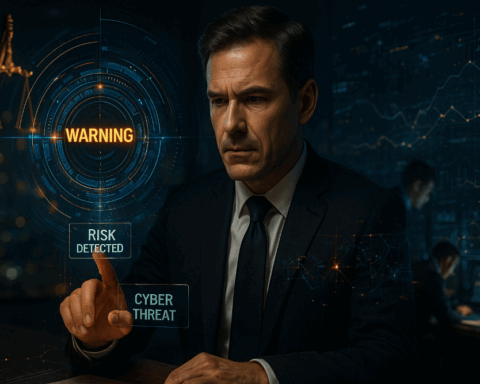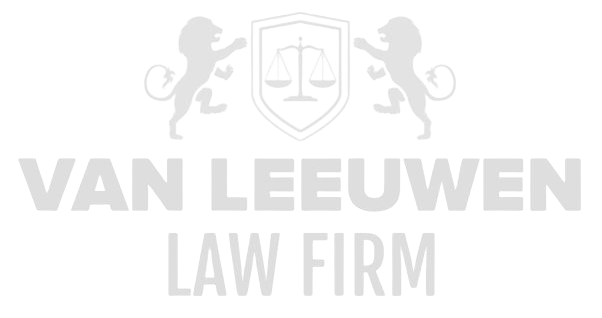Financial crime constitutes an exceedingly complex and multifaceted threat within today’s corporate landscape, involving illegal activities aimed at obtaining financial gain through deception, fraud, and manipulation. The scope of these offenses is broad and manifests in numerous forms, each marked by a high degree of subtlety and intricate complexity. In the boardrooms where strategic decisions are made, the urgency arises not only to acknowledge the impact of financial crime but also to address it with the utmost precision. The issue extends far beyond direct financial losses; the potentially devastating consequences for reputation, market position, and stakeholder trust represent an indelible burden that must compel executives to act decisively. A profound understanding of the industry, coupled with sharp legal acumen, is indispensable to uncover the true scope and nature of such criminal activity and to combat it effectively.
The entwinement of financial crime with complex business processes makes detection and control a formidable challenge. It necessitates a comprehensive approach in which executives do not merely function as overseers, but as active guardians of integrity within the organization. Mechanisms for detection and prevention must not be limited to technical or procedural frameworks but must be embedded in a culture that values authenticity and transparency. Executives operate at the intersection of legal responsibilities and ethical standards, where the line between unconscious negligence and intentional misconduct is often perilously thin. This compels a state of constant vigilance and a model leadership role that upholds not only the letter of the law but its spirit as well. The tension between business objectives and legal compliance requires careful calibration, whereby the integrity of the enterprise must be regarded and protected as an inalienable asset.
Money Laundering
Money laundering is a core concern within financial crime, involving the process of disguising the illicit origins of funds through a complex network of transactions to render them “clean.” This practice poses a direct threat to the stability of financial markets and the integrity of the global financial system. Money laundering typically occurs in several stages: placement, layering, and integration into the legitimate economy—each of which involves circumventing various legal and operational barriers. Executives face the critical challenge of developing and implementing effective systems capable of both detecting and preventing suspicious transactions. A lack of such systems leaves organizations vulnerable to exploitation, resulting not only in legal and financial sanctions but also in severe reputational damage.
The complexity of money laundering is amplified by its transnational character, utilizing offshore financial centers, so-called tax havens, and sophisticated corporate structures. This international dimension requires a thorough understanding of both domestic and international regulations, including the directives of supervisory authorities and global bodies such as the Financial Action Task Force (FATF). For the C-suite, this implies an ongoing obligation to align internal compliance policies with evolving regulatory standards and to conduct strategic risk assessments aimed at identifying early indicators of laundering schemes. The core challenge lies in balancing the facilitation of legitimate business activities with the prevention of abuse of the financial system.
Implementing a zero-tolerance culture toward money laundering is imperative. This not only entails advanced technological systems and regular staff training, but also a strong ethical foundation within the organization. The ethical framework must be robust enough to expose even subtle attempts at manipulation or deceit. In this context, it is essential that leadership not merely enforce compliance from a distance but actively promote a transparent and principled corporate culture. Only through such an integrated approach can an organization’s continuity and reputation be safeguarded.
Terrorist Financing
Terrorist financing represents an even more intricate dimension of financial crime, distinguished by its direct implications for national and international security. Whereas money laundering focuses primarily on concealing illicit proceeds, terrorist financing involves the provision of funds to facilitate violent and subversive activities. This makes it critical for executives to develop mechanisms capable not only of monitoring financial transactions, but of discerning the underlying intent and context of those transactions. The challenge is considerable, as terrorist financing frequently exploits legitimate channels, small transfers, or seemingly innocuous institutions and companies, thereby eluding traditional detection methods.
International cooperation in this area is intense and mandates that organizations comply with strict sanctions and reporting obligations. National and supranational bodies impose specific regulations designed to combat terrorist financing, including sanctions lists and mandatory Know Your Customer (KYC) procedures. For executives, this necessitates constant vigilance and regular adaptation of compliance programs, with proactive collaboration among regulators, financial institutions, and industry actors. The legal and ethical complexities surrounding terrorist financing demand a finely tuned policy approach—one that ensures public security while not unnecessarily hindering legitimate financial services.
Furthermore, the fight against terrorist financing requires deep insight into the networks and behavioral patterns employed by terrorist groups to raise, move, and utilize funds. This calls for a multidisciplinary approach combining financial expertise, intelligence, and technology. For the C-suite, this translates into a responsibility to allocate adequate resources and to cultivate internal expertise capable of identifying suspicious activity at an early stage. In doing so, executives make a vital contribution to protecting society from the destructive violence that terrorist financing facilitates.
Sanctions and Embargoes
Sanctions and embargoes are powerful instruments employed by states and international organizations to advance political, economic, or security objectives. These measures impose restrictions on trade, investment, financial transactions, and other economic activities aimed at specific countries, entities, or individuals. For corporations and their leadership, compliance with sanctions regimes presents a highly complex legal and operational challenge. The risks of non-compliance are severe, ranging from hefty fines to the revocation of operational licenses and significant reputational damage.
The regulatory landscape for sanctions is inherently dynamic, with measures changing rapidly in response to geopolitical developments. This requires executives to remain consistently attuned to international political contexts and the legal frameworks that evolve in their wake. Organizations must have sophisticated systems in place to screen against sanctions lists and to monitor transactions, alongside protocols that enable swift responses to changes. The legal context surrounding sanctions necessitates nuanced interpretation; compliance is not a matter of box-checking, but of strategic alignment and informed risk management.
Operating within sanctions frameworks also demands a delicate balance between commercial imperatives and legal obligations. Executives must anticipate the reputational and operational risks that accompany sanctions enforcement, and clear communication with stakeholders is paramount. Transparency in compliance policies and how sanctions are implemented can enhance trust in the enterprise. The engagement of specialized legal and compliance advisors is essential for navigating these volatile waters and for ensuring the continued viability of operations amid the often-turbulent backdrop of sanctions law.
Fraud
Fraud remains one of the most prevalent and damaging forms of financial crime, characterized by deliberate deception intended to result in financial or personal gain. Fraud manifests in myriad forms—from internal embezzlement and accounting irregularities to large-scale, cross-border operations. Executives are confronted with the responsibility not only to detect fraudulent activity, but to actively prevent it through rigorous internal controls, a culture of integrity, and ongoing training of personnel. Prevention requires a comprehensive strategy that addresses not only systems and processes, but also behavioral patterns that may signal misconduct.
The legal framework surrounding fraud is extensive, encompassing both civil and criminal dimensions. Building a watertight evidentiary record is essential for effective prosecution or recovery of losses. Executives must remain acutely aware of the legal ramifications of fraud—not only for the organization at large, but for themselves individually, as personal liability for governance failures in fraud cases is a tangible and increasing risk. The intricate nature of fraud investigations necessitates close collaboration with forensic accountants, legal experts, and law enforcement to uncover the truth and pursue appropriate remedies.
Fraud strikes at the very heart of trust, the cornerstone upon which markets and institutions depend. The reputational fallout from fraudulent conduct can be profound and long-lasting, impairing a company’s operational continuity and market standing. For executives, this underscores the necessity of investing in proactive detection and prevention mechanisms, alongside transparent communication with stakeholders to rebuild confidence. Only through an unwavering and integrated approach can the damage wrought by fraud be mitigated and the organization shielded from irreparable harm.
Bribery Practices and Corruption
Bribery practices and corruption represent systemic threats that cause deeply rooted harmful effects within business and society as a whole. Corruption manifests in many forms, from directly offering or accepting bribes to more subtle influences through favors, conflicts of interest, and unfair preferential treatment. It is vital for executives to adopt an unwavering stance against these practices, as corruption not only undermines the rule of law but also fundamentally damages the integrity and credibility of companies. The line between acceptable business conduct and corrupt behavior can sometimes blur, requiring sharp ethical criteria and a clear governance structure that excludes corruption at all levels of the organization.
The legal approach to combating corruption is extremely complex and requires in-depth knowledge of both national and international regulations, including conventions such as the OECD Anti-Bribery Convention and the FCPA (Foreign Corrupt Practices Act). Executives must ensure that the organization has robust compliance programs focused not only on legal compliance but also on creating a culture that encourages and values ethical behavior. This involves implementing preventive measures such as due diligence on third parties, transparency in decision-making processes, and a well-functioning whistleblower mechanism. Effective corruption prevention also requires proactive cooperation with regulators, enforcement agencies, and international partners to adequately detect and address suspicious transactions and behaviors.
Corruption has far-reaching consequences beyond legal sanctions; it undermines the trust of investors, customers, and employees and can lead to significant reputational damage and financial losses. Therefore, it is crucial for executives to remain continuously alert to signs of corrupt behavior and to intervene promptly. Promoting transparency and integrity within the organization is key to preventing bribery. Executives should constantly evaluate themselves and their organizations against the highest standards of business ethics, recognizing that long-term success cannot be built on short-sighted and unethical practices.
Tax Evasion and Tax Fraud
Tax evasion and tax fraud constitute an increasingly urgent and complex issue within financial crime, where companies and individuals deliberately avoid legal obligations or exploit tax regulations to artificially reduce their tax burden. This not only affects public finances and fair competition but also undermines trust in the tax system and the rule of law. It is essential for executives to have a clear understanding of the various forms of tax evasion, including the use of offshore structures, manipulation of transfer prices, and hiding income, and to implement effective internal controls against these practices.
The legal boundaries between legitimate tax planning and illegal tax evasion can be blurry, making it difficult for executives to act appropriately. Tax fraud and evasion are often intertwined with international tax structures and a complex web of regulations, requiring deep tax expertise and continuous monitoring. Executives must ensure a transparent tax strategy that not only complies with laws and regulations but also considers societal expectations and the company’s reputation. Adopting a proactive stance on tax compliance is not only a legal requirement but also a moral obligation that strengthens organizational sustainability.
The consequences of tax fraud extend beyond financial penalties and legal prosecution. Disclosure of tax misconduct can lead to substantial damage to reputation, loss of customer trust, and even boycotts or exclusion from markets. This makes it necessary for executives not only to invest in preventive measures but also to foster a culture where tax integrity and transparency are valued. Effectively addressing tax fraud requires close cooperation with tax advisors, compliance officers, and legal experts, as well as the development of internal reporting mechanisms to detect and manage potential risks early.
Market Manipulation
Market manipulation is a harmful practice that undermines the fundamental principles of fair and transparent markets. It involves deliberately influencing prices, volumes, or information to create a false impression of supply and demand, with the aim of obtaining improper financial gain. Executives face the challenge of safeguarding the integrity of the markets in which they operate and preventing their organization from becoming unwittingly or intentionally involved in manipulative practices. This requires a keen awareness of the various forms of market manipulation, such as spreading misleading information, creating fake transactions (wash trades), and staging sham trades.
The legal and regulatory frameworks surrounding market manipulation are strict and complex, with regulators possessing extensive investigative powers and sanctioning options. Executives must ensure robust governance and compliance structures that enable the detection and prevention of market manipulation. This implies not only implementing advanced monitoring and analysis tools but also fostering a culture that promotes integrity and transparency and encourages employees to report suspicious activities. The impact of market manipulation can be far-reaching, causing not only financial harm to investors but also weakening trust in the financial system as a whole.
Preventing market manipulation requires ongoing education of executives and employees about the risks and legal implications, as well as a proactive attitude toward ethical business conduct. Executives should also anticipate technological developments that may facilitate market manipulation, such as high-frequency trading and algorithmic trading, and implement appropriate countermeasures. Ensuring fair markets is not only a legal obligation but also an essential part of corporate social responsibility that forms the basis for sustainable economic growth.
Collusion and Antitrust Violations
Collusion and antitrust violations undermine the foundations of a free and fair market by enabling competitors to cooperate in ways that restrict or eliminate competition. Practices such as price-fixing, market allocation, and cartel formation are direct attacks on the economic system, leading to higher prices, reduced innovation, and inefficient allocation of resources. It is essential for executives to ensure clear compliance with antitrust laws and actively prevent and combat any form of collusion inside and outside the organization.
The legal risks associated with collusion are very high, with penalties ranging from heavy fines to criminal prosecution and personal liability of executives. The complex nature of antitrust legislation, which also includes cross-border aspects, requires thorough knowledge of national and international rules and accurate interpretation of behavioral standards. Executives must ensure that the organization has clear guidelines, training, and a compliance culture that excludes unauthorized cooperative behavior. Moreover, it is crucial that all communications and agreements within the company are monitored for potential antitrust risks.
Besides legal risks, reputational damage is a significant burden. Collusion harms the trust of customers, shareholders, and the public in the company’s integrity and can have long-lasting negative effects on market position. Therefore, executives must not only guarantee compliance but also actively promote ethical behavior and transparency. Implementing an effective whistleblower system and fostering an open culture where misconduct can be reported are crucial pillars in preventing and combating collusion and antitrust violations.
Cybercrime and Data Breaches
Cybercrime and data breaches represent one of the most significant and immediate threats to businesses worldwide in the digital age. The speed and scale at which cyberattacks can occur require executives to remain constantly vigilant and to invest in advanced security measures. Cybercriminals employ increasingly sophisticated techniques, ranging from ransomware and phishing to espionage and sabotage, targeting not only financial gain but also the acquisition of sensitive corporate information, intellectual property, and customer data. A data breach can have far-reaching consequences, not only financially through fines and remediation costs but, more importantly, for the reputation and trust of customers and partners.
The legal frameworks surrounding cybersecurity and data breaches have been significantly tightened in recent years, with regulations such as the General Data Protection Regulation (GDPR) setting explicit requirements for the protection of personal data and the reporting of security incidents. Executives must ensure that the organization is equipped not only technically but also organizationally and legally to comply with these requirements. This includes establishing a robust cybersecurity policy, conducting continuous risk assessments, performing regular audits, and providing employee training to raise awareness. Additionally, it is essential to have incident response plans in place to respond quickly and effectively to a cyberattack or data breach.
The impact of cybercrime extends beyond direct damage; it can disrupt business processes, lead to loss of competitive advantage, and increase oversight and compliance costs. Executives must therefore adopt a holistic approach in which cybersecurity is an integral part of business strategy and risk management. Collaboration with external experts, regulators, and other organizations within the sector is necessary to address the ever-evolving threats. Timely detection and mitigation of cyber risks are essential to ensuring business continuity and maintaining trust in the organization.









